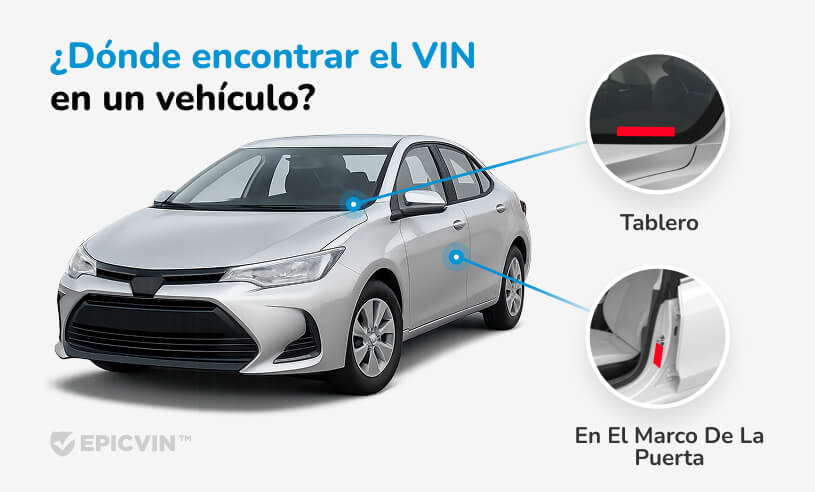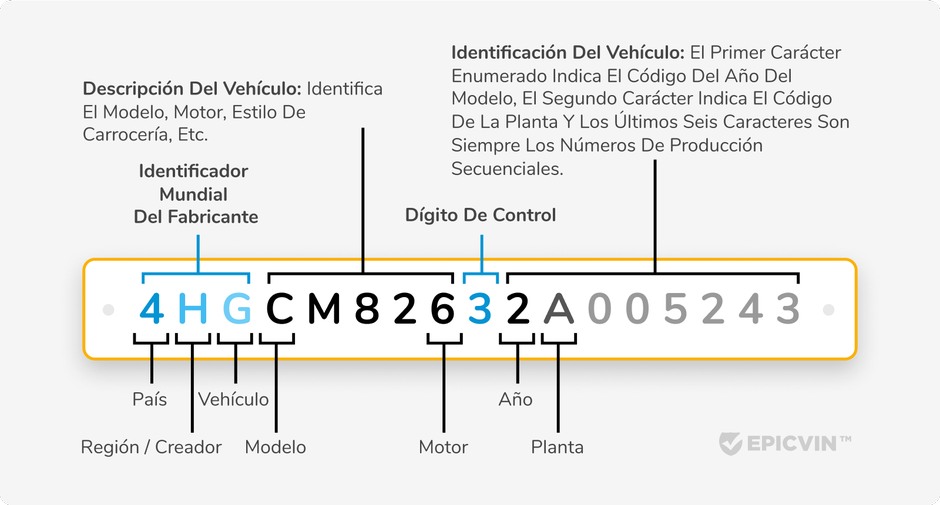
Decodificación del VIN
En este artículo, hemos descrito en detalle qué es el código VIN.

¡Decodificador de VIN Saturn gratuito! 🚗 Consulta especificaciones, hoja de construcción, retiradas del mercado e historial básico - sin registro. 🛡️✅ ¿Necesitas accidentes, kilometraje, títulos? Actualízate con un clic.
Búsqueda del VIN
Aquí lo puedes encontrar:

El vin de Saturn es un código único asignado a cada vehículo Saturn desde 1981, siguiendo las normas del Instituto ISO. Este número de identificación vehicular (VIN) de 17 caracteres revela detalles cruciales sobre tu vehículo Saturn, haciendo que nuestro decodificador de vin Saturn sea esencial para los compradores que buscan especificaciones completas y verificación precisa del historial.
Decoding your Saturn VIN number provides instant access to essential car information and detailed vehicle history records.

El numero vin Saturn aparece en varios lugares del vehículo para facilitar su identificación y verificación:
| Riesgo Clave | Impacto en compradores | Medidas de prevención |
|---|---|---|
| Riesgo de robo | NICB informa que los robos de vehículos bajaron un 17 % en 2024, pero sedanes GM antiguos como la serie Saturn S siguen siendo blanco frecuente. | Realiza una consulta vin Saturn con NICB, instala un bloqueo en la columna de dirección y estaciona en zonas iluminadas. |
| Retiros de seguridad sin reparar | Solo se completan ≈ 44 % en autos de 5–10 años; todos los Saturn en circulación tienen más de una década. | Usa la herramienta de revisar vin gratis de NHTSA para Saturn y exige prueba de reparación antes de comprar. |
| Depreciación | Los modelos descontinuados de Saturn pueden perder hasta un 64 % de su valor en cinco años, frente al 45,6 % del promedio. | Verifica el precio con la herramienta de mercado de EpicVIN y negocia con firmeza. |
| Fraude con el odómetro | NHTSA estima que se venden 450.000 autos manipulados cada año. | Compara el kilometraje con registros de NMVTIS y revisa el historial de servicio. |
| Historial oculto de inundación o salvamento | EpicVIN cuenta ≈ 347.000 autos con daño por inundación tras las tormentas de 2024. | Examina fotos antiguas de subastas; busca óxido, olor a humedad y consulta el decodificador vin Saturn. |
Cómo minimizar riesgos: Siempre realiza una consulta vin Saturn con EpicVIN y NMVTIS. Revisa fotos de subastas, compara kilometraje con registros de servicio y no ignores retiros abiertos.
| Problema | Modelos afectados, síntomas, costo promedio de reparación |
|---|---|
| Falla en transmisión VTi CVT | Saturn VUE e ION 2002–2005 (< 120.000 mi): resbalones, sin tracción; ≈ 3.800 USD por transmisión reacondicionada o cambio a caja manual. |
| Fallo en interruptor de encendido | Ion 2003–2007 y Sky 2007: apagado del motor, airbags desactivados; reemplazo ≈ 300 USD en piezas y mano de obra. |
| Desgaste de cadena de distribución | Outlook y Aura 3.6 L LY7 2007–2010: traqueteo en arranque en frío, código MIL P0017; kit de cadena actualizado ≈ 2.300 USD. |

Cada carácter del VIN sigue un formato específico:
Otros detalles clave:
Así es como nuestro decodificador de VIN de Saturn interpreta una secuencia de muestra (1G8ZJ52722Z161132):
| Símbolo | Muestra | Significado |
|---|---|---|
| 1 | 1 | Fabricado en EE. UU. |
| 2 | G | Fabricante: GM |
| 3 | 8 | Tipo de vehículo: pasajeros |
| 4-8 | ZJ527 | Estilo, motor, seguridad, modelo y acabado |
| 9 | 2 | Dígito de validación |
| 10 | 2 | Año modelo: 2002 |
| 11 | Z | Planta: Spring Hill, TN |
| 12-17 | 161132 | Numero de serie Saturn |
Año 1999
Marca Saturn
Modelo SL2
Tipo de combustible
Motor 1.9L In-Line
Hecho en USA
Nuestro decodificador de vin Saturn revela:
1 de cada 7 Saturn tiene al menos un retiro abierto – y puedes evitarlo si revisas el vin de Saturn antes de comprar.Alex Black, CMO, EpicVIN
Busca el número de serie Saturn en el tablero, puerta del conductor, motor o documentos.
No, Saturn no fabricó vehículos eléctricos.
Errores al escribir el vin de Saturn o caracteres dañados lo invalidan; revisa los 17 dígitos.
Sí, las etiquetas y el VIN visible en el parabrisas suelen mantenerse intactos.
Revisa fotos de subastas y consulta vin Saturn para comparar con registros NMVTIS.
California, Florida y Texas lideran los reportes de robo; modelos S y L son los más afectados.
Sí, modelos como VUE e ION se encuentran con frecuencia en subastas tras huracanes.
Revisa el vin de Saturn en NHTSA y GM Owner Center; exige prueba de reparación.
El decodificador de vin revela motor y año; el historial completo requiere informe.
Si la puerta fue reemplazada o la etiqueta dañada, usa el tablero o documentos para revisar vin gratis.
Descubra consejos de expertos, sugerencias y noticias sobre la compra y el mantenimiento de vehículos usados.

En este artículo, hemos descrito en detalle qué es el código VIN.

Obtenga información detallada sobre la depreciación del automóvil y los vehícu...

Si está buscando un vehículo rápido y económico, le invitamos a leer nuestro a...